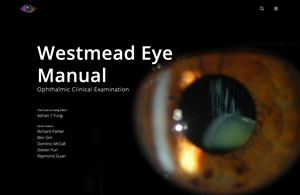13 Rhegmatogenous Retinal Detachment Special Scenarios
13.1 Rhegmatogenous Retinal Detachment: Re-detachment Surgery
13.2 Macular Hole Retinal Detachment
13.3 Retinoschisis Retinal Detachment
13.4 Optic Disc Pit Retinal Detachment and Maculopathy
13.5 Giant Retinal Tear Detachment
13.6 Retinal Dialysis
13.7 Macular Folds
13.8 Sickle Cell Detachment
13.9 Viral Retinitis Associated Retinal Detachment
13.10 Paediatric Retinal Detachment
13.11 Coloboma Associated Retinal Detachment
13.12 Inherited Retinal Dystrophies and Retinal Detachment
13.1 Rhegmatogenous Retinal Detachment: Re-detachment Surgery
For cases of failed retinal detachment repair, the cause for the re-detachment must be determined and treated. Potential causes for re-detachment may include:
- Insufficient prior relief of vitreoretinal traction
- Persistent attachment of the posterior hyaloid
- Insufficient laser retinopexy or cryoretinopexy of retinal breaks
- Development of proliferative vitreoretinopathy (PVR)
- A missed or new retinal break, including iatrogenic retinal break from excessive laser or cryotherapy causing retinal necrosis
Check to see if sufficient vitrectomy has been performed. After insertion of trocar and infusion cannulas, injection of intraocular triamcinolone acetonide is helpful in visualizing any residual vitreous or posterior hyaloid that may still be attached to the retina. It is not uncommon for persistent anterior hyaloidal loop traction to be present and mistaken for PVR.
If true PVR is present, attempts should be made to remove it (by peeling or retinectomy) to allow the retina to become mobile enough to flatten (see Chapter 10.1 Rhegmatogenous Retinal Detachment - Vitrectomy Repair). Even if a retinectomy is planned, peeling all membranes posterior to it is essential to decrease the rate of post-operative contraction. Proliferative vitreoretinopathy (PVR) membranes may be epiretinal, intraretinal or subretinal. Only epiretinal and subretinal membranes are amenable to peeling. Trypan blue or ICG can be useful to visualize PVR epiretinal membranes. These are more difficult to peel than idiopathic epiretinal membranes because the retina is mobile and the membranes themselves are more adherent. Sometimes it is easier to stain and peel the ILM with Brilliant Blue B to ensure that the posterior hyaloid and epiretinal membranes have been removed completely and to break the connection between the macula and adjacent areas of bridging traction. A bent needle or barbed MVR blade can be useful to initiate the peel.
In cases of subretinal proliferation, membranes under the retina may need to be addressed (they can be left alone if they are not causing significant traction leading to re-detachment). Subretinal bands can be removed with a punch through retinotomy either at the site of the end of the band or adjacent to it (Figure 13.1.1). It is important to diathermise the retinotomy site first to prevent haemorrhage, which can be problematic if it spreads subretinally. Heavy forceps (e.g. Grieshaber® MaxGrip® forceps, Alcon) are useful to remove the band as they can be extremely adherent and elastic (Figure 13.1.2). It is best to pull in the same line as the band, as parallel to the retinal surface as possible. Alternatively, the surgeon can use both hands to roll the band around the forceps like a spaghetti (this requires the assistant to hold the light pipe, or insertion of a chandelier light).
New breaks need to be treated with further endolaser or cryotherapy. In many re-operation cases, a scleral buckling element may be useful (see Chapter 11.1 Rhegmatogenous Retinal Detachment - Scleral Buckle and Chapter 12 Rhegmatogenous Retinal Detachment - Combined Vitrectomy and Scleral Buckle) particularly if PVR is present and can even be helpful in the presence of a retinectomy to support the anterior horns. A lensectomy may be indicated, in some cases, to allow for adequate removal of all PVR or anterior hyaloidal loop traction. In cases of re-detachment repair, intraocular endotamponade is usually accomplished with a long-acting gas (C3F8) or silicone oil (see Chapter 5.1 Intraocular Tamponades and Vitreous Substitutes)
All rights reserved. No part of this publication which includes all images and diagrams may be reproduced, distributed, or transmitted in any form or by any means, including photocopying, recording, or other electronic or mechanical methods, without the prior written permission of the authors, except in the case of brief quotations embodied in critical reviews and certain other noncommercial uses permitted by copyright law.
Westmead Eye Manual
This invaluable open-source textbook for eye care professionals summarises the steps ophthalmologists need to perform when examining a patient.

